Don't throw away those chicken bones and veggies scraps! Save them in your freezer until you have enough to make a pot of Homemade Chicken Stock! This healthy bone broth can then be frozen and saved to make soups, sauces and other recipes!
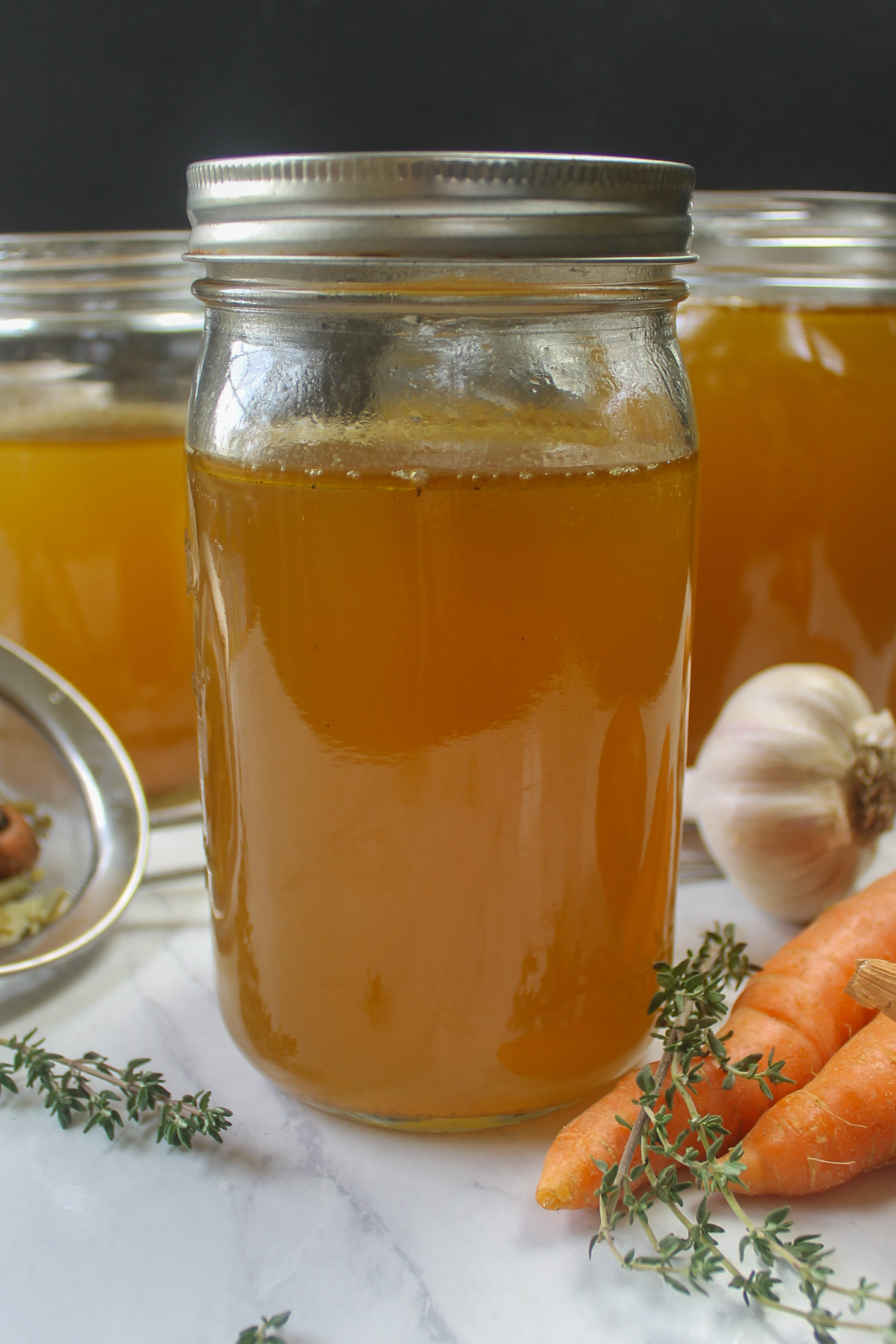
In the kitchen, and in life in general, I hate to waste. Instead, turn your chicken bones and vegetable scraps that would otherwise be wasted, into a kitchen staple, homemade chicken stock!
This is a simple method of simply tossing chicken bones and vegetable ends into the freezer whenever you have them. This is an easy practice, and becomes habit after awhile in the kitchen. While making dinner, save the ends of onions, the tops and peels of carrots, those stems of parsley that you would otherwise throw away!
Roast a Whole Chicken or sear a Bone in Cast Iron Skillet Chicken Breast and save those bones! Pull the meat off a rotisserie chicken and save the carcass! Toss it all in your freezer using glass jars, large containers or freezer bags.
When a good amount builds up, just simmer it in water to literally make a huge pot of useful chicken stock out of what you would have tossed in the trash!
Jump to:
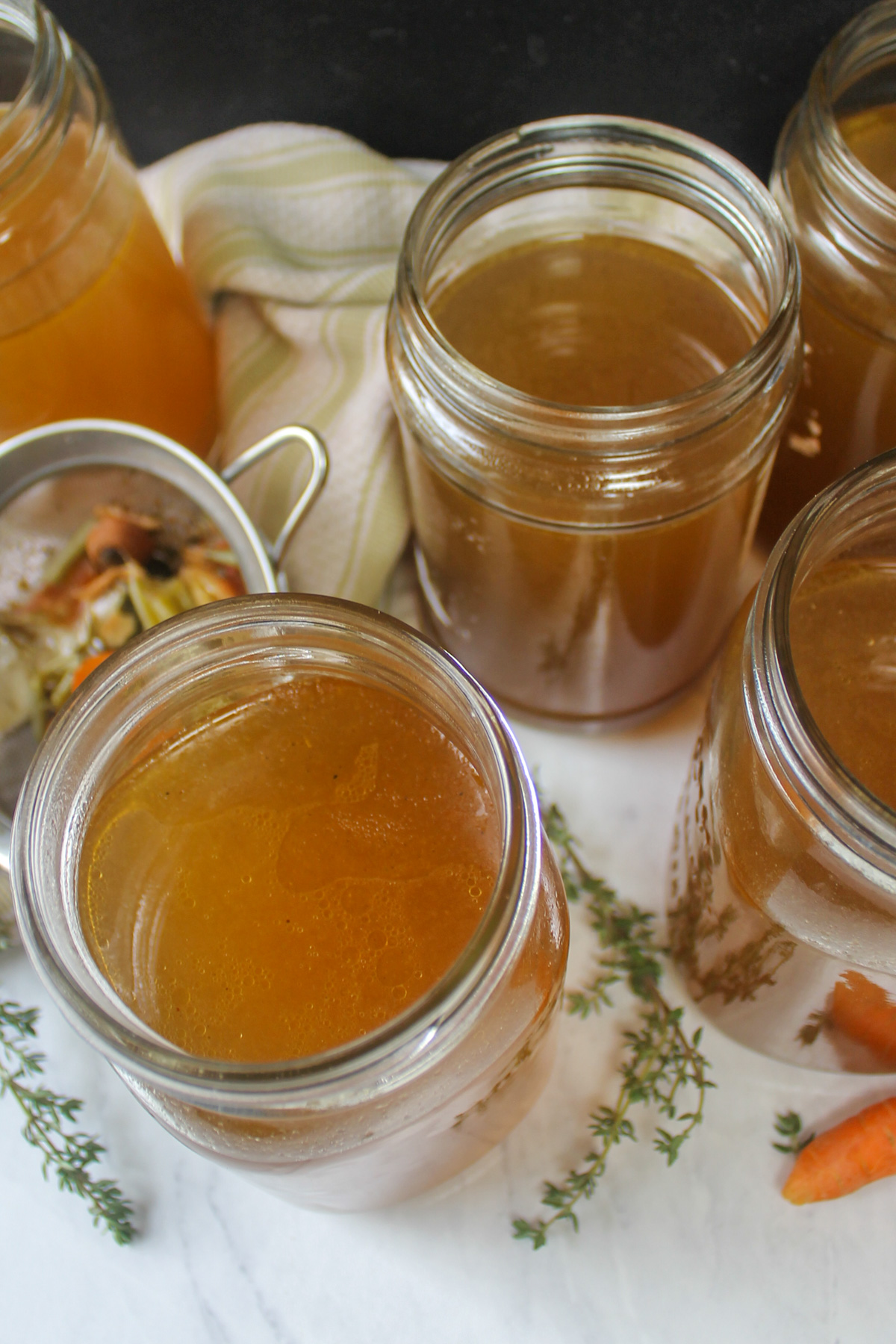
Ingredients - How to Save Kitchen Scraps for Stock
Get in the habit of saving bones and veggie scraps when you're cooking and have a container or ziploc ready in your freezer.
- This list is all the things that can go into stock, although you certainly don't need them all!
Just save what you have, chicken bones are of course a must, but onions, carrots and celery are next in importance. These scraps add nutrition to your stock, save you money, and allow you to stock your freezer, perfect for cozy winter soups!
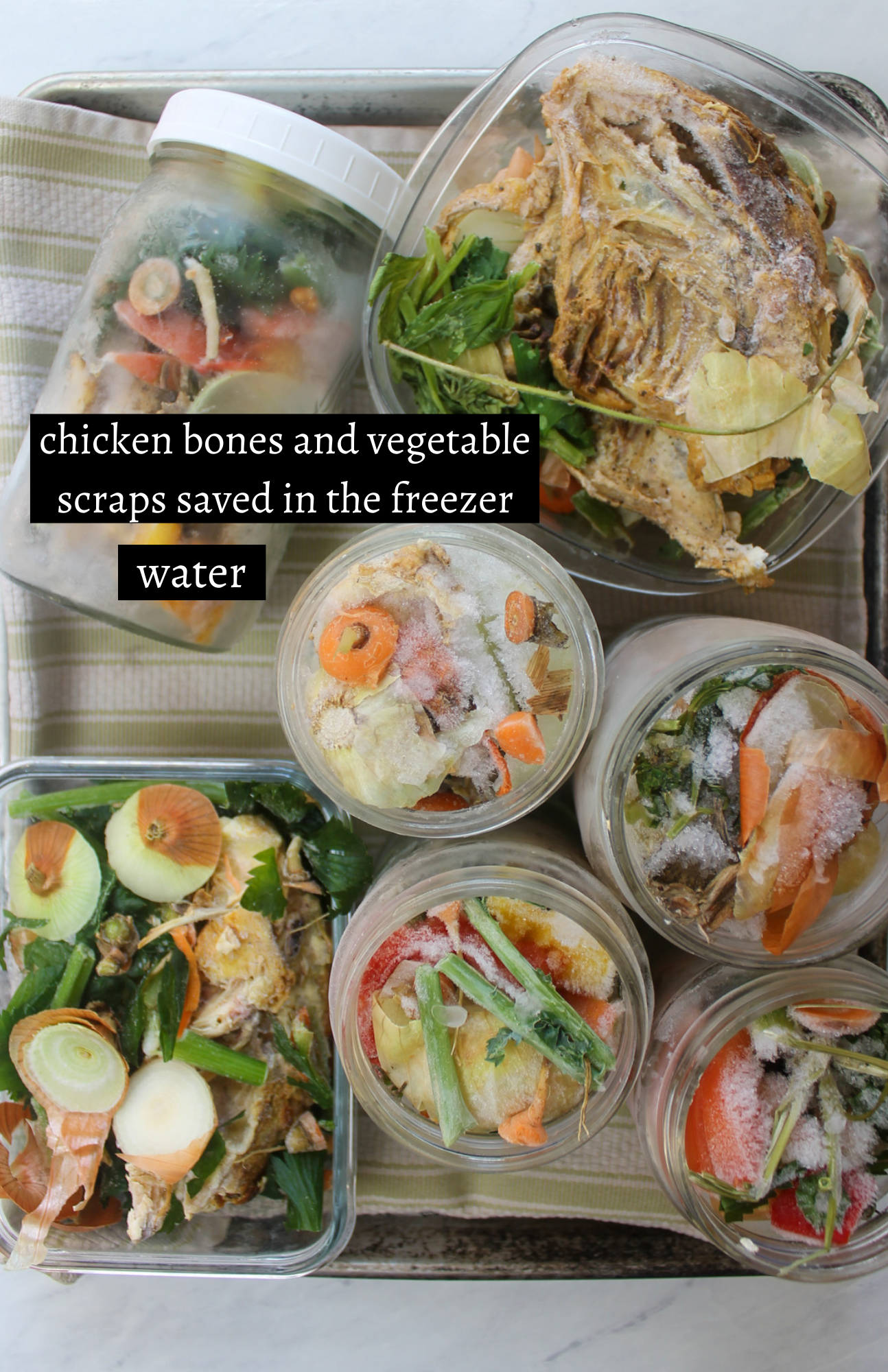
- Cooked Chicken Bones - This can be any bones from the chicken you eat, including the carcass from a rotisserie chicken. Save all breast, thigh, wing or leg bones, or a whole chicken carcass. At Thanksgiving, this recipe can be used for the turkey carcass. The only bones I would not save are if they were heavily seasoned with something strong like curry or barbecue. Basic chicken seasonings like salt, pepper, garlic, butter, lemon or Italian herbs are all fine to save. I would also not save bones from wings or drumsticks that someone ate directly from. Throw those in the trash.
- Onions ends and skins - Save any tips, root ends or peels, especially the white parts from yellow or white onions, or shallots. I would not save red onions as they can be overpowering in the stock.
- Carrot ends or peels - Make sure they are washed and free of dirt!
- Celery ends or leaves
- Tomato ends or core pieces
- Other Vegetable Scraps You Can Add - Onion, Carrot and Celery, also called mirepoix, are the most important vegetable scraps, and you can add as many as you have. Other veggie scraps can be thrown in as well, but in moderation. For example, you wouldn't want to add 15 broccoli stems, but 1 or 2 would be fine. Throw in the ends from asparagus or Brussel sprouts, scallions, the green tops and ends of leeks, cauliflower cores, green bean ends, kale stems, bell pepper stems but not from hot peppers, broccoli stems, mushroom stems, end pieces from butternut squash or other winter squash, zucchini ends, and herb stems from parsley, thyme, rosemary, oregano or sage.
- Do NOT Add
- Rotten vegetables or bad parts that you are cutting off of a usable piece of a vegetable.
- Potato peels or ends, they just dirty up your stock.
- Herbs like cilantro or mint.
- Dirt - make sure mushroom stems are free of dirt and all vegetable scraps are washed and clean.
- Too many of one particular vegetable. Some asparagus ends are ok but you don't want a whole pot full or it would take over the flavor.
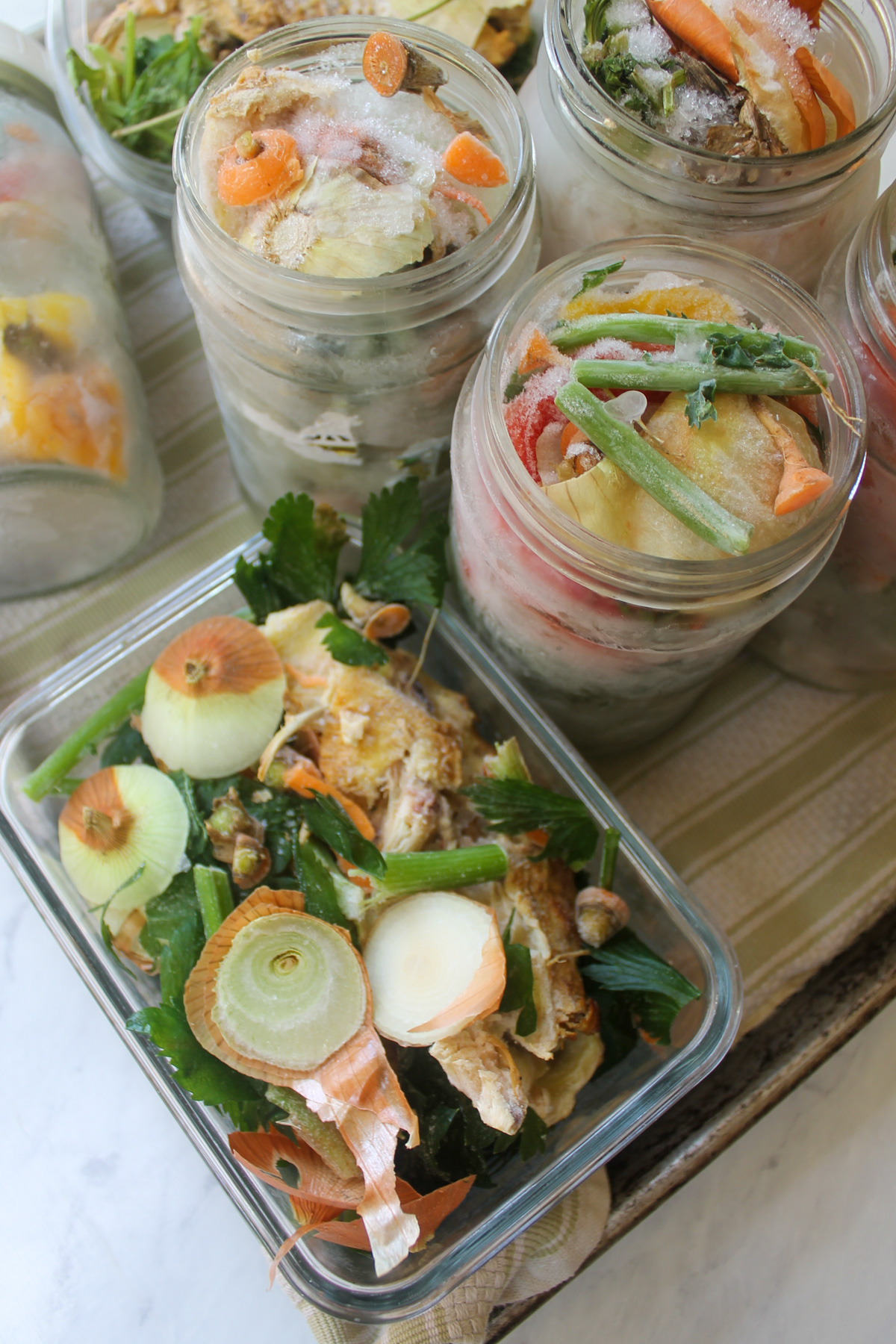
Instructions
Save your chicken bones and vegetable scraps in the freezer until you have at least half a pot full to make chicken stock. You should have at least 1 or 2 full chicken carcasses, or 5 or 6 pieces of breast or thigh bones.
How to Make Chicken Stock from Scraps - Add all your frozen scraps to a large soup pot, do NOT thaw them in advance, just add them frozen.
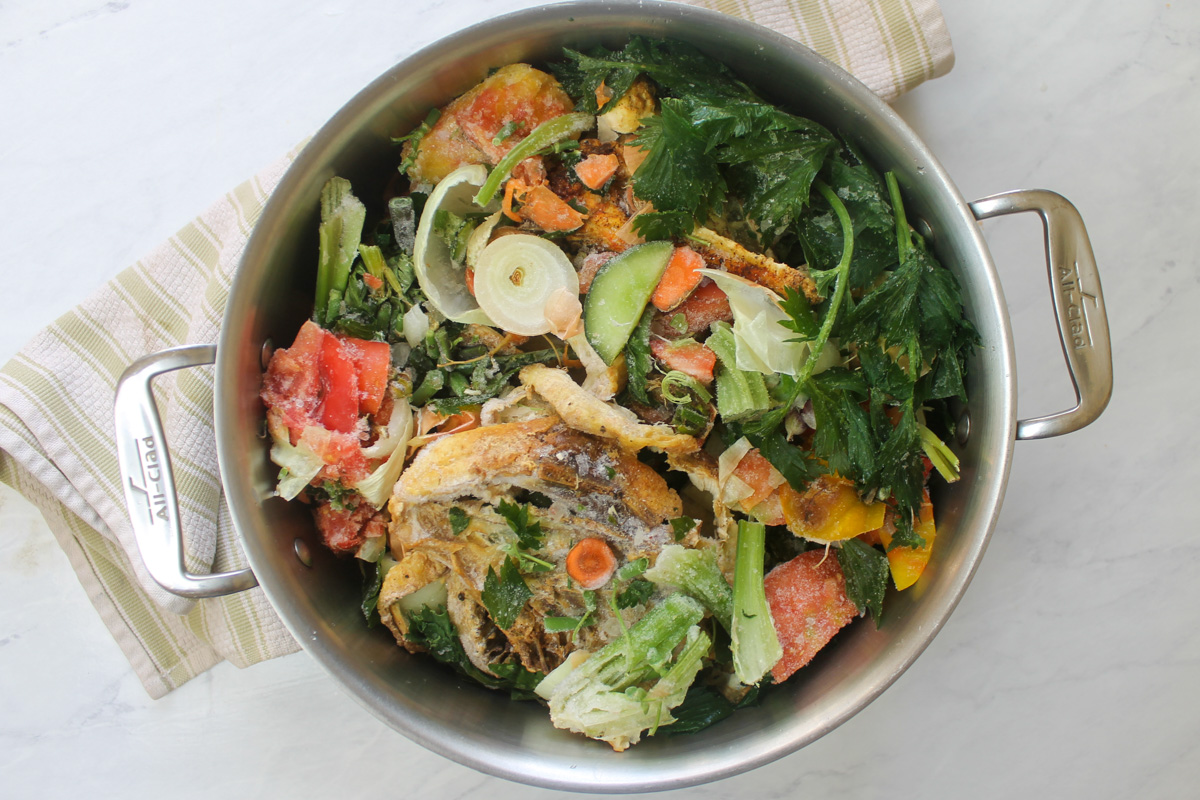
Cover them with water, filling your pot full. The exact amount of scraps and water doesn't matter.
This should be the water that you drink. So if you filter the water in your house for drinking, I would use the filtered water to make stock.
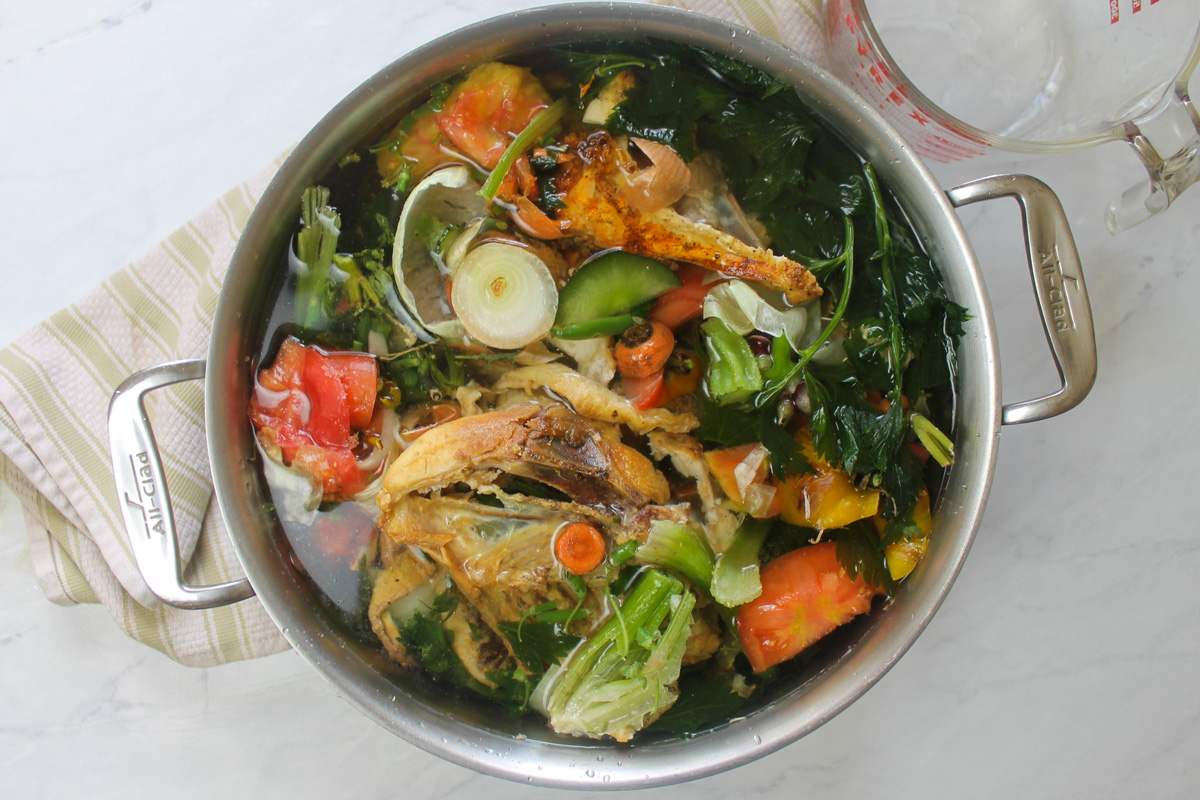
On the stovetop, start it over medium heat for about 15 minutes to bring it up to a simmer, then reduce the heat to LOW and simmer about 4 hours.
You want the stock lightly simmering, not totally still, but do NOT boil the stock. Do not cover, and do not stir the stock.
This is the stock after about 2 hours of simmering, halfway done.
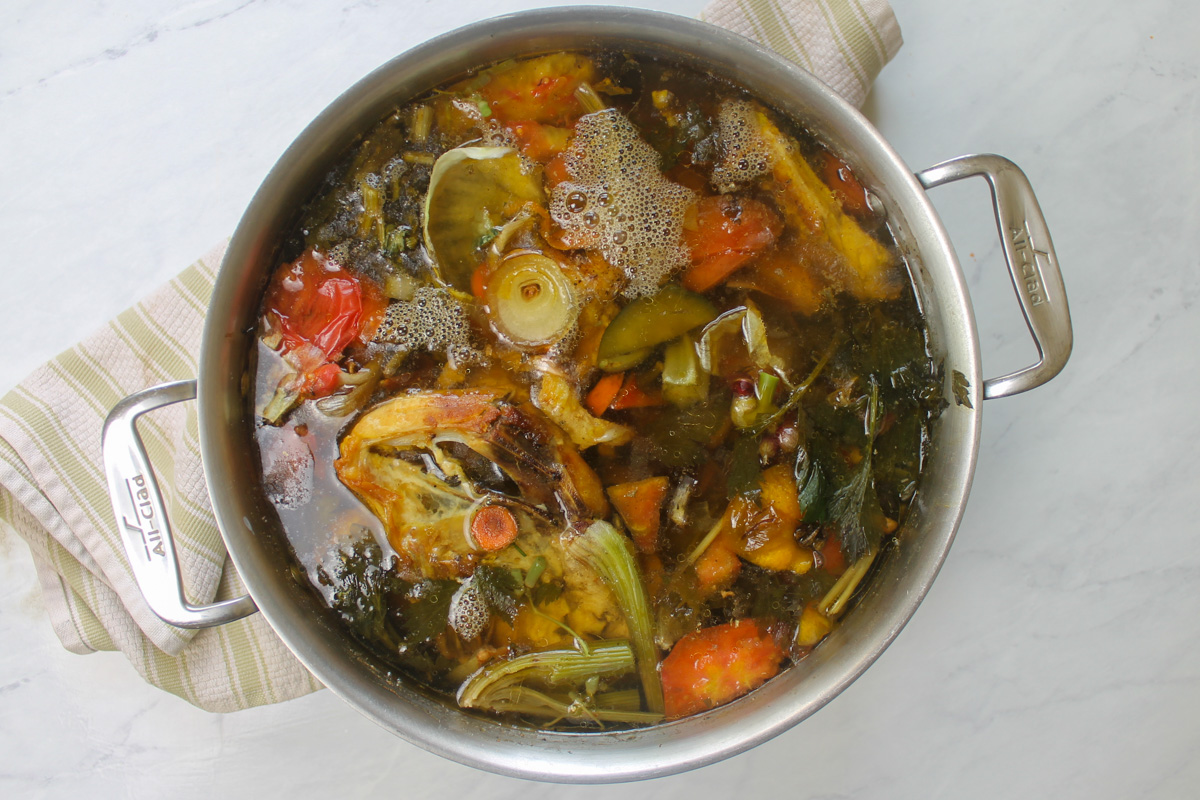
When the stock has reduced in volume by 25 to 40 percent, and is dark golden brown in color, it's done. Turn the burner off and allow it to cool for a half hour or so.
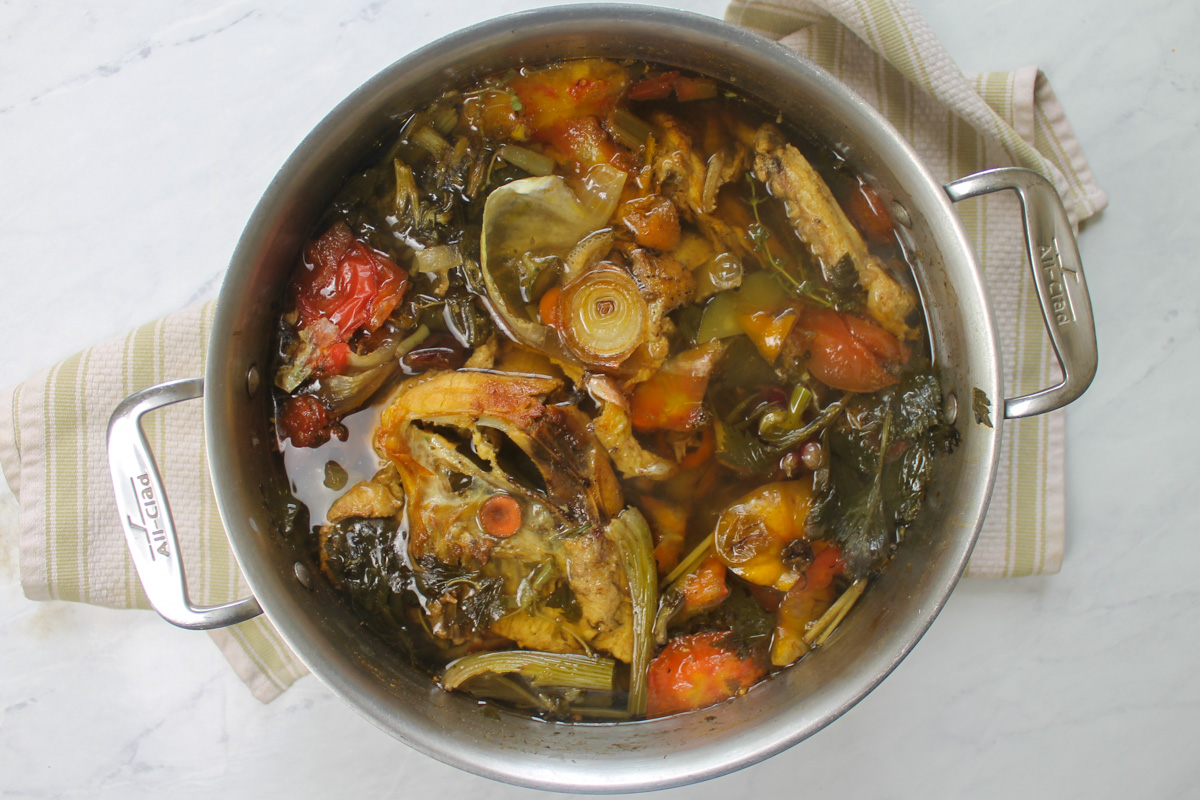
Prepare your containers for freezing the stock. I like to use large glass jars, but you can use any airtight freezer safe containers.
Strain the stock through a fine mesh strainer. You can either strain the entire pot into another pot and then add it to the jars, or strain it directly into the freezer containers, depending on the size of strainer you have. A jar funnel and a ladle work great.
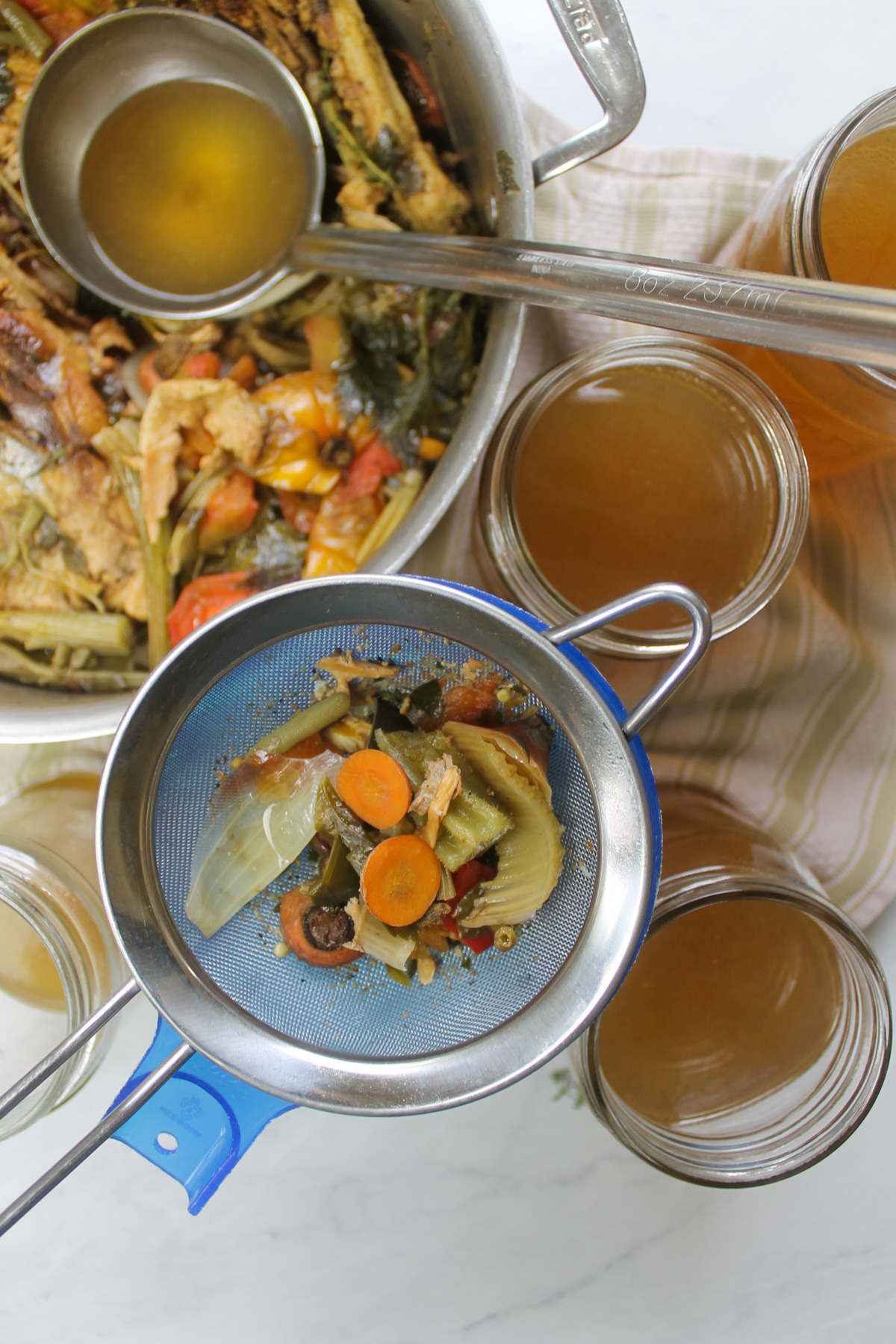
Be sure only to fill jars or any containers about ¾'s full to allow room for expansion as they freeze.
Label your containers with masking tape and a sharpie marker. Cool them completely in the fridge, preferably overnight, before transferring them to the freezer.
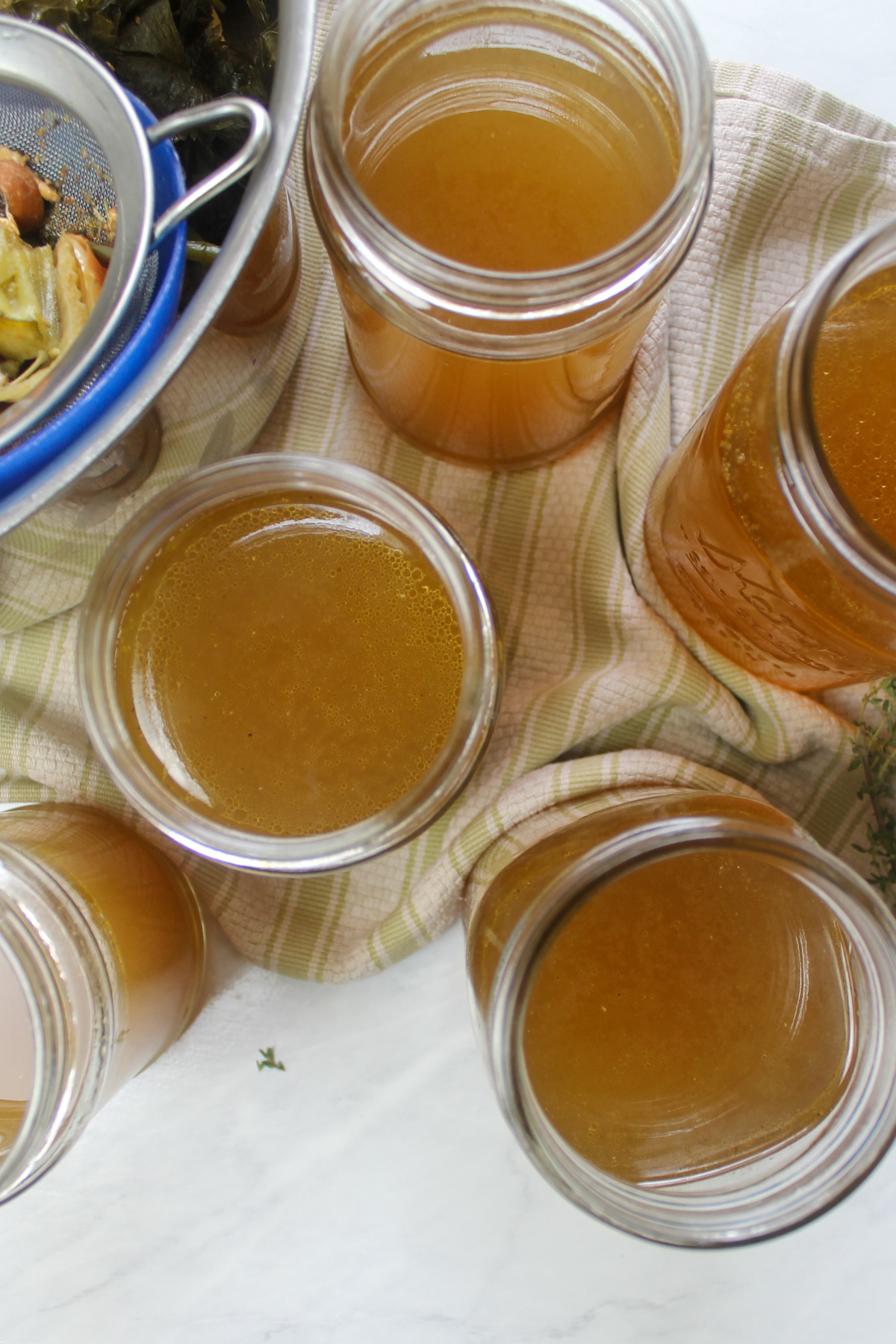
Expert Tips
- Do not add bad or rotten vegetable scraps to your homemade bone broth. If you wouldn't want to eat it, don't put it in your stock!
- Make sure all vegetable scraps you are adding to your freezer stash are washed and free of dirt.
- The exact quantities of bones, vegetables and water are not really important. You want a good amount of bones and veggies for flavor, but aside from that, just fill your pot full with water.
- Do not cover your stock as it simmers. You want the steam to rise and escape, reducing the amount of liquid and condensing the flavor.
- Do not boil the stock, this can cause it to be cloudy and dirty looking. Instead, simmer it slowly over low heat.
- Do not stir your chicken stock. This is not needed and can make your stock cloudy. Just set it and forget it!
- Do not add salt. Your bones from the roasted chicken, or especially from a rotisserie chicken, are already salted. You will also add salt when making soup or whatever recipe you use your stock for. You can always add salt later, but you can't take it out once it's in there!
- If you've only saved chicken bones and not veggie scraps, you can chop and add 1 onion, 1 carrot, and 1 or 2 ribs of celery to make stock.
- When you refrigerate the chicken stock, it may become gelatinous and have a white layer of fat on the top. This is a good thing! It means all that good stuff from the bones made it into your stock! You can choose to scrape off the white fat before or after freezing and thawing, or just leave it, it really doesn't hurt anything. The gelatinous stock will turn back into a liquid when it is heated. If your stock didn't gel, that's ok too!
- Make sure to cool your chicken stock at least a half hour before adding it to glass jars. Do not leave the chicken stock to cool overnight on the stovetop. Only leave the stock unrefrigerated to cool for up to 2 hours. Overnight is too long.
- How to Store Chicken Stock is as important as how to make it, read all the tips below!
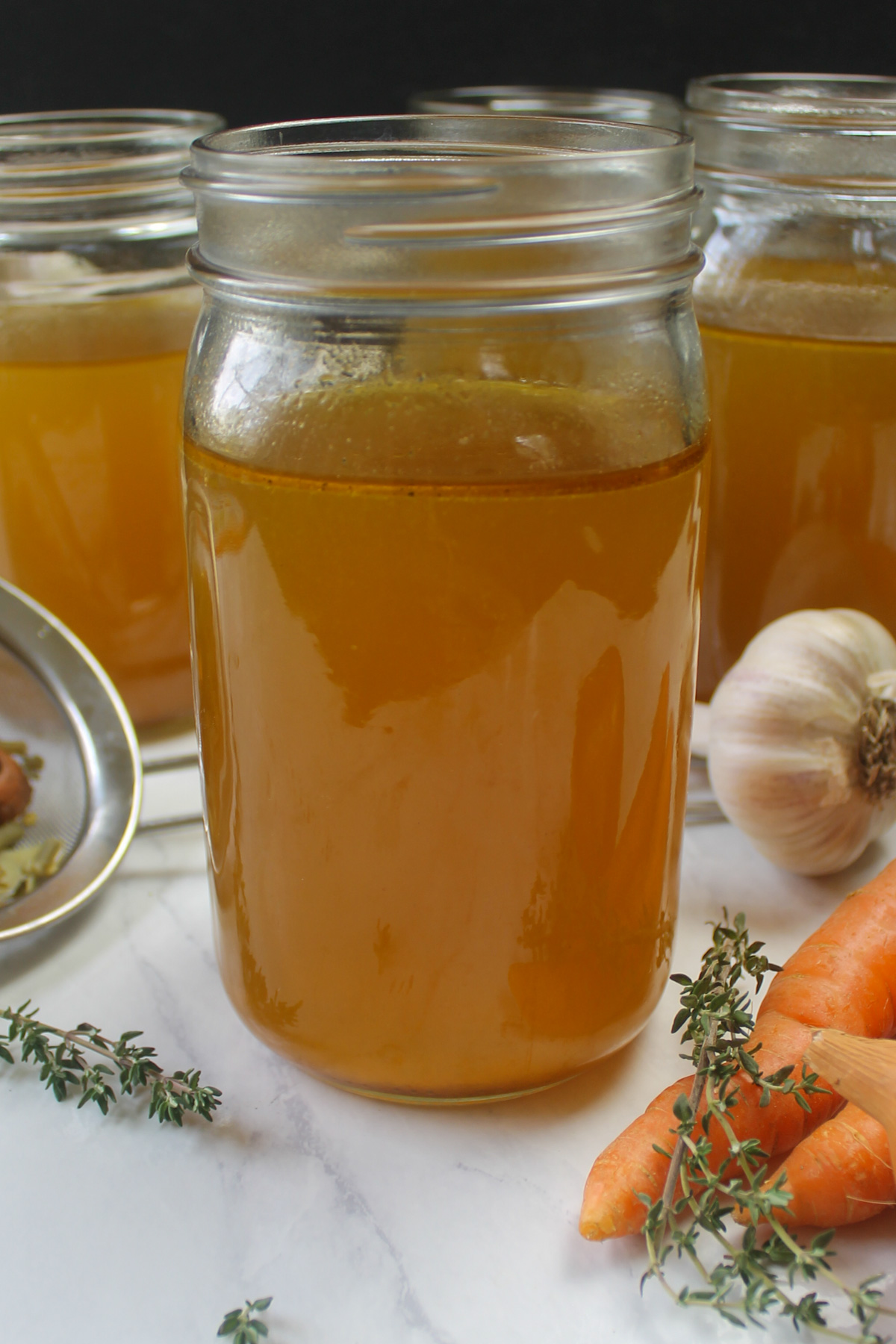
Storage - How to Freeze Homemade Chicken Stock
- Homemade Chicken Stock can be refrigerated and used within 3 to 4 days or frozen for up to 6 months.
- Glass jars are a great container for freezing chicken stock. They don't need to be canning jars, I save all jars from things like peanut butter, coconut oil, or tomato sauce! I think glass is better than plastic when adding a hot liquid.
- Important! Only fill jars ¾'s of the way full to allow the liquid room to expand as it freezes. If you don't leave enough room your jars can crack in the freezer! If you do get an occasional cracked frozen jar, it's no big deal, you made this stock from nothing! Do not attempt to save the stock, just throw it away, it happens.
- Glass jars don't like sudden temperature changes! So allow your stock to cool at least 30 minutes before ladling it into the jars. Then allow those jars to cool completely in the fridge overnight before transferring them to the freezer. This allows the jars to slowly go from hot to warm to cold to frozen, increasing the likelihood that they won't crack.
- You may want to freeze your stock in different amounts for different uses. Like when you only need a cup of stock to make a pan sauce, versus when you need a large amount to make a pot of soup. You can freeze your stock in different sized jars or containers so you can just thaw out the amount you need.
- To use your frozen chicken stock, thaw it overnight in the fridge. You can also use the defrost setting on a microwave or leave it on your counter a few hours to speed things up. Do Not run a frozen jar under hot water or put it in a bowl of hot water, it can easily crack. Remember, glass doesn't like sudden temperature changes!
- Try these 27 Homemade Foods to stock in your Freezer!
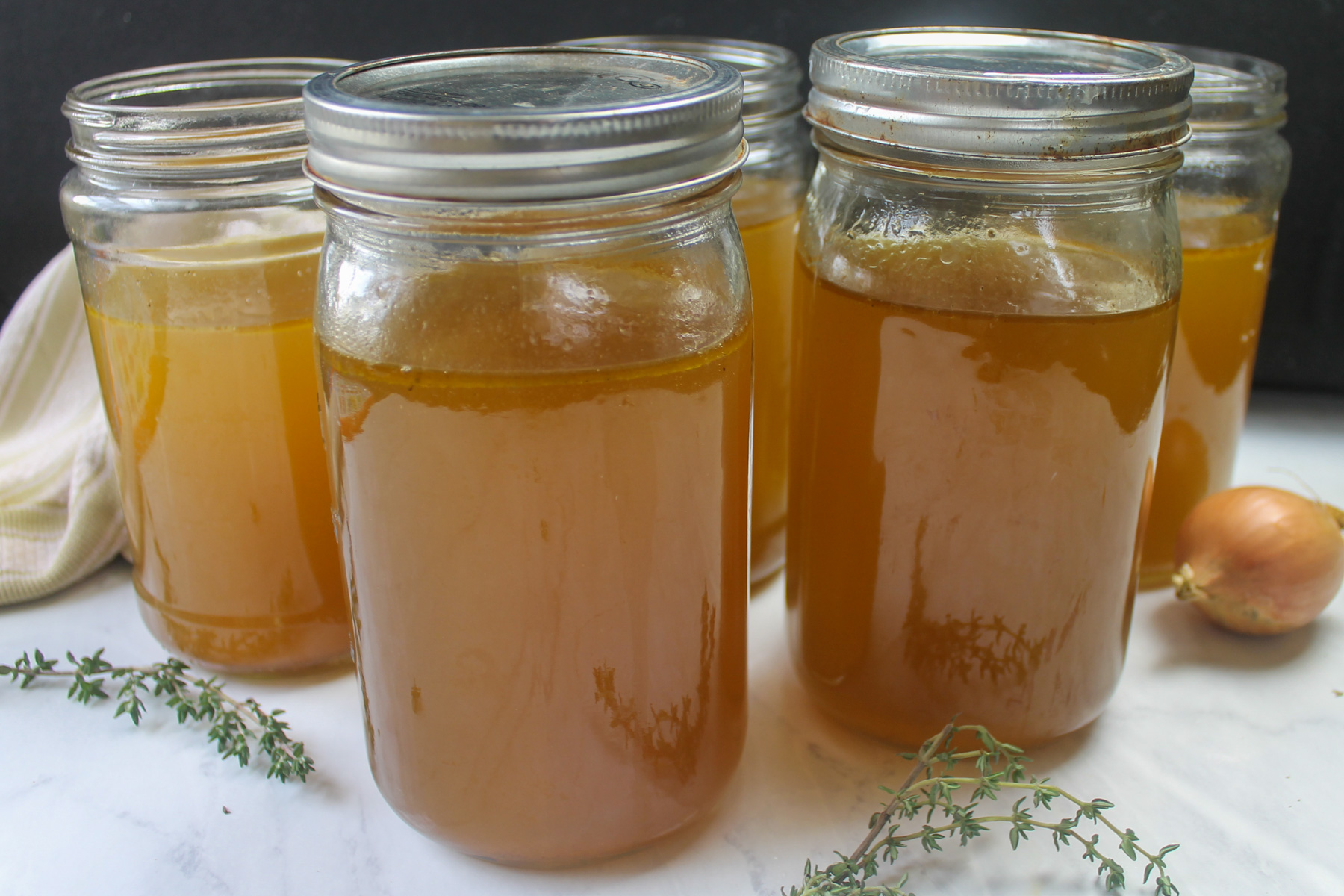
Top Tip
Don't make chicken stock harder than it is! When your scraps and water are simmering, you can set it and forget it. You don't need to stir it or watch it, just let it simmer away! Do not however, leave the stovetop burner on overnight or while you aren't home.
What to Cook with Your Homemade Chicken Stock
- Chicken Wild Rice Soup
- Pasta Fagioli Soup
- Slow Cooker Chicken Noodle Soup
- Split Pea Soup with Ham
- Creamy Tomato Soup with White Beans
- Sweet Potato Corn Chowder
- 30 Minute Chicken Tortilla Soup
- Beef Cabbage Soup
- Slow Cooker White Chicken Chili
- Asparagus Soup
- Chicken Veggie Pot Pie
- One-Pot Jambalaya
- Cranberry Herb Bread Stuffing
- Use it to cook rice, couscous, risotto, or other grains
- Warm up a coffee cup of stock and drink it when you're sick!
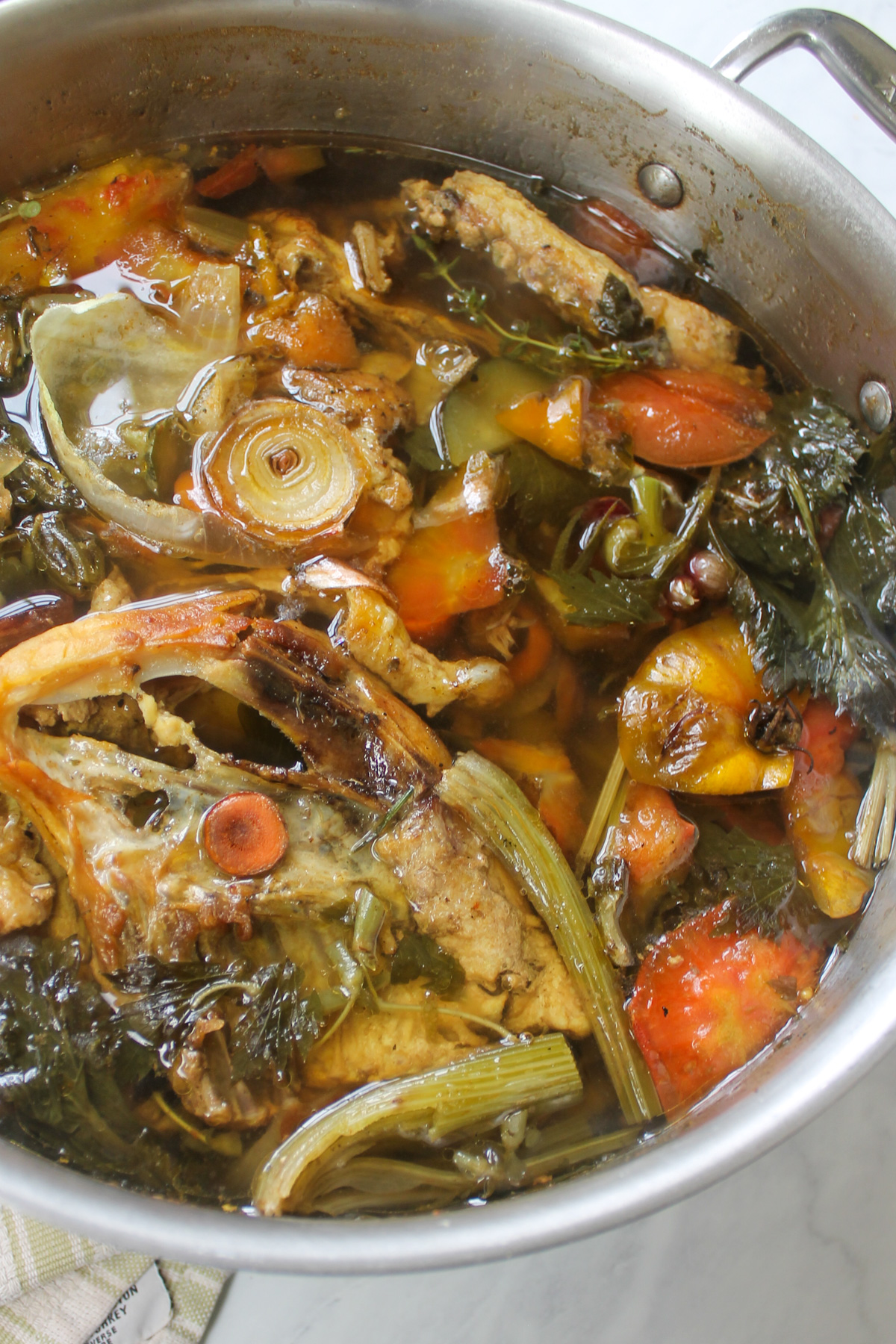
Recipe FAQs
Yes! You can freeze homemade chicken stock in glass jars, just make sure to only fill them ¾'s of the way full to allow room for expansion. Let your stock cool slightly on the stove before adding it to the jars. Then cool your stock completely in the fridge overnight before transferring jars to the freezer.
Yes! You can save the carcass from a rotisserie chicken in the freezer until you've saved enough scraps to make chicken stock.
Yes, and you absolutely should! Anytime you have cooked chicken bones, whether it's a whole chicken carcass or just a bone-in chicken breast or thigh, save those bones in your freezer! Freeze them right along with vegetable scraps like onion, carrot and celery, and when you've accumulated a good amount, make stock! Just add the frozen scraps and fill your pot with water and simmer.
Making homemade chicken stock from scraps and bones is simple, saves money, and creates less waste! Just save your chicken bones, onion, carrot, celery and other vegetable scraps in the freezer until you have enough. Then simmer the frozen scraps in a pot filled with water for about 4 hours. Allow to cool slightly, transfer to containers, and cool in the fridge before transferring to the freezer. Be sure to fill the containers only ¾'s full to allow the stock room to expand as it freezes.
More Recipes You'll Love!
If you made this recipe, I'd love to hear how you liked it! Be sure to leave a star rating by clicking the stars in the recipe card, or leave a comment below!
Follow Sungrown Kitchen on Pinterest, Instagram, and Facebook for loads of garden recipes! Be sure to Subscribe Here for new recipes delivered straight to your inbox!
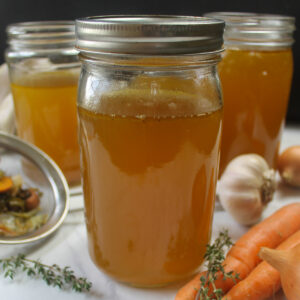
Homemade Chicken Stock from Bones and Vegetable Scraps
Hit the stars to rate this recipe!
Print Pin RateEquipment
- large soup pot
- strainer
- jars or containers to store stock
Ingredients
- 4 to 6 quarts frozen chicken bones and vegetable scraps including onion, celery and carrot ends and peels
- 4 to 6 quarts water
Instructions
- Add your frozen chicken bones and vegetable scraps to a large pot. Fill the pot with water to cover the scraps. The exact amounts don't matter, just add all the scraps you have saved and fill your pot with water.
- Start on the stovetop over medium heat for about 15 minutes to bring it up to a simmer. Then lower the heat to LOW and simmer, don't boil, for about 4 hours. Do not cover.
- Allow stock to cool on the stovetop at least 30 minutes before straining and ladling into jars or other freezer containers. Only fill jars ¾'s full to allow for expansion as they freeze. Filling jars too full can cause them to crack! Cool jars completely, overnight in the fridge, before transferring to the freezer.
- To use, thaw overnight in the refrigerator.
Notes
- Kitchen scraps to save in the freezer for stock - any cooked chicken bones or carcasses, including rotisserie chicken bones, ends or peels from onion, carrot, celery, and tomato. Extra veggie scraps such as ends from asparagus, Brussel sprouts, bell pepper, green beans, zucchini, butternut squash, broccoli or cauliflower. Stems from kale, parsley or other herbs (not cilantro or mint).
- Keep your pot of stock just barely bubbling, not totally still but not boiling. This is usually low to medium low heat.
- Store chicken stock in the refrigerator for 3 to 4 days, or freeze for up to 6 months.
- Stock can be stored in any freezer save containers but I prefer glass jars.
- Glass jars don't like sudden temperature changes! So allow your stock to cool at least 30 minutes before ladling it into the jars. Only fill jars ¾'s of the way full to allow room for expansion. Then allow those jars to cool completely in the fridge overnight before transferring them to the freezer. This allows the jars to slowly go from hot to warm to cold to frozen, increasing the likelihood that they won't crack.
- Thaw overnight in the fridge to use.
- Nutrition info is for 1 quart of stock and is an estimate.


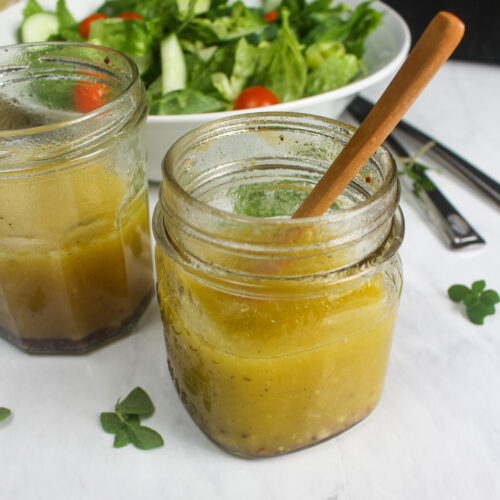
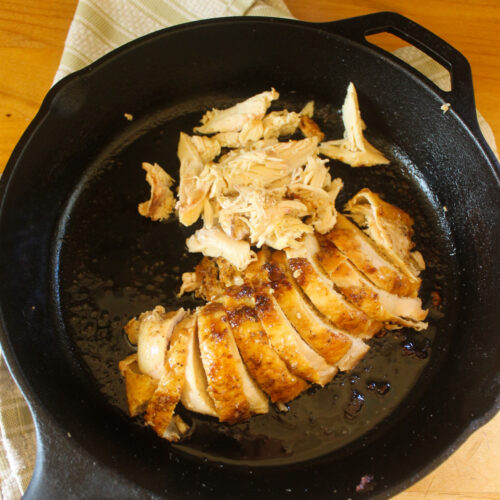
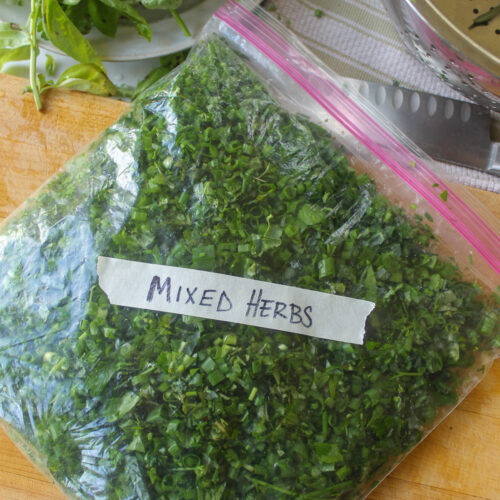
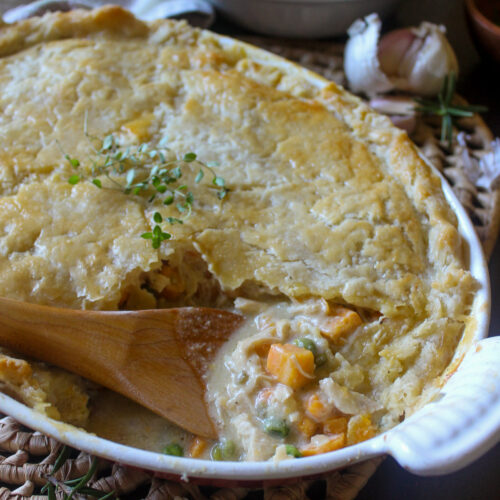

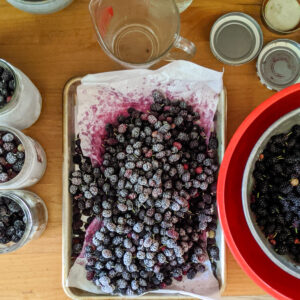
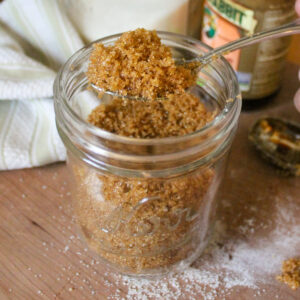
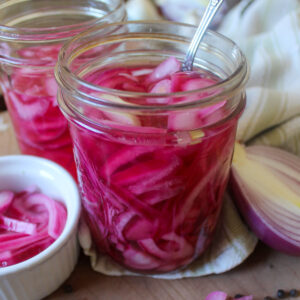
Su Hay says
Your recipe for chicken stock worked so well. I've been making stock for years, but the tips you give take it to a whole new level and I realised where I'd been going wrong. Many thanks Meryl, as a "newby" to your page I look forward to many more bits of great advice and wonderful recipes.
Meryl Downing says
Thank you Su! I love making homemade chicken stock that way too, it's such a great extra use for what could just be thrown away! Hope you enjoy lots of recipes!
Kristina says
Can this recipe be canned since I have very limited freezer space?
Meryl Downing says
Hi Kristina, I am not an expert on canning so I don't like to give advice from a safety standpoint.
Johnny says
I can homemade broth and stock all the time. I make mine in the instant pot so that it doesn't take as long but the premise is the same. You can find plenty of information out there on canning stocks and broths. You have to pressure can it and treat it as meat. So that means usually pints at 75 min and quarts at 90 at whatever pressure for your elevation.